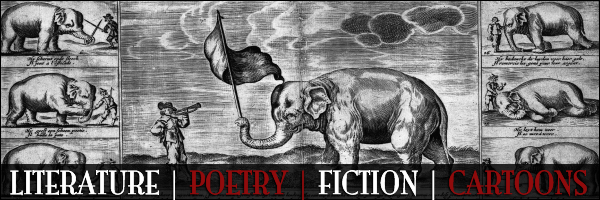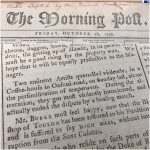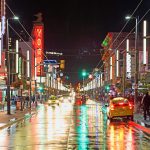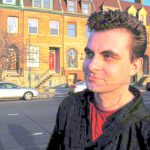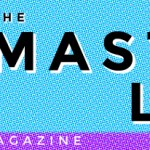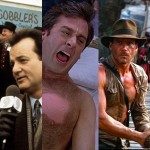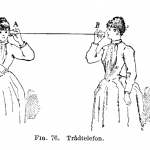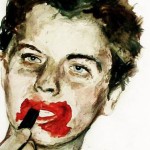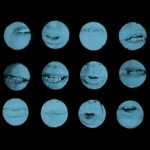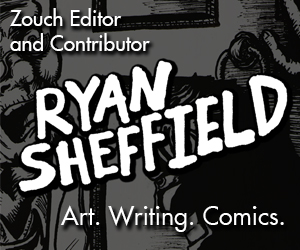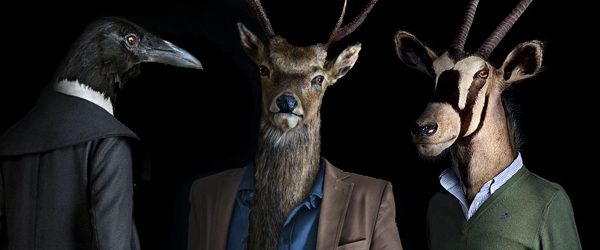
Talking Okinawa Blues
Fiction, LiteratureThe man had been teaching animals how to speak and in return the animals had been teaching the man how to be a better human being. Your main problem, the animals told the man, in their strange, creaking voices, is that you are motivated by hunger.
Those first talking animals were a shock and a terror to everyone. The worst were the smallest animals that would hide under mattresses or under wallpaper or in breakfast cereals and speak in shrill, invisible choirs, practising their vowels and talking dirty to each other and reasoning for their lives.
The man wrote an article for the New York Times declaring that he had discovered a method of teaching animals how to speak. The man said the exact details of the method were only known by himself and the animals, and that the animals had promised to never reveal it to another human being.
I was born in Okinawa and I first heard those talking animals on the palm winds of the Kinbu bay. In the gasping and squirming diamond squid nets that Mother and Father wrestled out of the water.
The man said that the easiest animals to teach how to speak were those species most afraid of humans and most eager to learn to talk and bargain for peace. The laziest and least interested animals were the dogs and cattle and grizzly bears who had given up their wilderness long ago and who were ashamed of themselves for their tameness and wanted to hold onto what little remnants of their animal nature they had left.
The first animal to talk publically on television was an Indonesian mountain weasel who spoke quietly and modestly and mispronounced many words. There was a press conference where the Indonesian mountain weasel stood on the man’s palm and addressed the crowd. During the press conference the reporters asked questions like what gives you the right and how does it feel and when will all this end?
After the man had taught the first animals to speak, the animals began teaching each other. And speaking spread through the oceans and the top soil and the safari parks. Some animals were too little to learn to talk, such as head lice, who still got into the spirit of things nonetheless and learnt to listen and patter their microscopic feet in understanding.
Most animals who learnt to talk could talk in many languages. They said that learning one human language was the same as learning all human languages. The animals said they enjoyed speaking English above all other languages because it was the most ridiculous. They said it was the saddest and the worst designed.
It was thought that humans might stop eating animals after animals started speaking, but humans carried on eating animals all the same. Humans wore headphones when they worked in abattoirs and hen houses and salmon farms and when they ate oysters raw and when they picked out live lobsters for the boil.
The food industry stopped showing animals on the containers and packaging for meat and animal products, instead they depicted elderberries and aloe vera and the silent, speechless forests and everybody ate honey ribs and chicken wings and rump steak pretending that their dinner had been carved out of a tree, though everybody knew that it hadn’t.
I grew up in the outskirts of Okinawa between the US military bases firing machine gun bullets into the sky and the gajumara trees who had grown green and old and bored of living and were waiting for the town planners and golf course tycoons to come and cut them down.
All the animals that could speak were good at giving advice. Even the hairy crabs and polychaete worms who made their lives in the smoke and magma a mile under the Perboewatan Sea and the giant woodlice who knew the world in terms of moss and rotten wood and the last lost polish bison who lapped at milky water and ran themselves to death chasing seeds and dragonflies through the Bialowieza forest.
Animals had more wisdom in their hooves and hind legs and useless antennae than all the humans put together. They started writing advice columns for the New York Times. They started appearing regularly on television, as guests on chat shows and news quizzes and as celebrity experts on reality TV.
Many humans who had previously turned to drink or to church or to massage therapy to solve their problems instead turned to the park and talked to the birds. Others stayed at home and waited for the spiders to gather dangling around them and ask in hungry, bubbling voices how their days had been.
After the man had finished teaching animals how to speak he invented a drug that let people live without eating. The drug was a blue and yellow powder and to take the drug you had to scrape the powder into a line and then snort the line of powder up your nose.
The man said that for an hour after you took the drug you would be the hungriest you have ever been in your life and then after an hour you would never be hungry again. He said that the drug would leave a taste of chlorine and cocoa butter in the top of your mouth and a tingling sensation under your tongue and that in certain cases it could cause deep, uncertain, sensations of euphoria.
The idea of inventing a drug that let people live without eating had come to the man whilst he was out late one night walking with a flock of Steller’s Jays. They had waddled alongside of him and around his ankles and craned their beaks upwards and said that the reason humans were the weirdest and worst behaved of all animals was that humans were the hungriest of all animals.
During its first few weeks of production, the man’s drug was met with much controversy and opposition. Religious groups rallied for its criminalisation, condemning the man as an infidel and an anti-christ and an evil doer, saying that god had given the gift of hunger to men and women and that men and women had no right to refuse a gift from god.
The food industry, meanwhile, claimed that cows would run wild through the streets if the drug was allowed to remain legal, that maize and wheat would spread and strangle and overwhelm the towns and villages and that pigs would learn to farm and eat how humans used to and through their nourishment grow cruel and clever and ambitious and culturally and militarily advanced.
In response to the scandal the man wrote an article in the New York Times saying that if they ever banned his drug then he would go on a hunger strike and everybody who read the article found it funny and charming and well-researched, especially the animals, many of whom worked for newspapers themselves and who in response wrote their own funny and charming and well-researched articles in favour of the man and his drug, that did much to sway public opinion.
I went to school in a converted sugarcane factory and after school I would ride my bike out into the country and then lumber screaming through the sugarcane fields as though I was being hunted. Some days I would search the sea caves for hand grenades and human bones and smuggled awamori. Other days I would cook in the sun like eggs.
Initially, the main demand for the man’s drug was from the US government, who had been investing billions in teaching talking animals how to spread propaganda and intolerant faiths and popular myths concerning contraception and who would test out the man’s drug by giving it to soldiers and then leaving them alone on rooftops and watching to see whether they starved.
Over time the supermarkets and the fashion industry and the medical professions began purchasing large quantities of the drug. It was marketed as a lifestyle must have and a miracle all mind and body cure. It could be bought over the counter at pharmacists and found free on the front of glossy celebrity magazines. It was sold in bookshops as an aid to uninterrupted reading and in sports and leisure and sex shops as a performance enhancer.
Homeless shelters portioned the drug into little plastic bags and handed it out to their residents along with clean socks and cups of tea. Foreign aid organisations parcelled the drug with mirrors and razors and insufflation instructions and parachuted the packages all over the developing world.
Supermarkets slashed their prices and reduced their stocks and fruit and vegetables and chilled sandwiches went rotten on their shelves untouched. Dentists and orthodontists fired their dental nurses and receptionists and nailed wood over the windows of their practises and walked the streets in protest.
Farmers would wake up worried and leave their homes in the middle of the night and stumble through their overgrown fields and lie down under the mottled sky and listen to their sheep and cattle gathering around them in a circle and telling them not to worry and to go back to the house and that everything will be OK.
Ten years following its invention and almost everyone on earth had taken the man’s drug and it was only the animals and the new born babies and the morally opposed who ever got hungry. Those few humans who elected to still eat food migrated to the warmest and most arable places of the world and formed agricultural communes under geodesic domes and lived amongst the fertilizer and soya beans and sent out radio broadcasts containing vegan recipes and predictions of the coming apocalypse.
Eventually the only shops left open were the supermarkets and the only thing they sold were flavoured cigarettes. Most people had given up their jobs and their money and their mortgages and become full-time tourists. Those few people that did work, worked in the supermarkets and they were the people who needed money to buy flavoured cigarettes and who talked every day about quitting their jobs and their cigarettes and becoming full-time tourists but never did.
